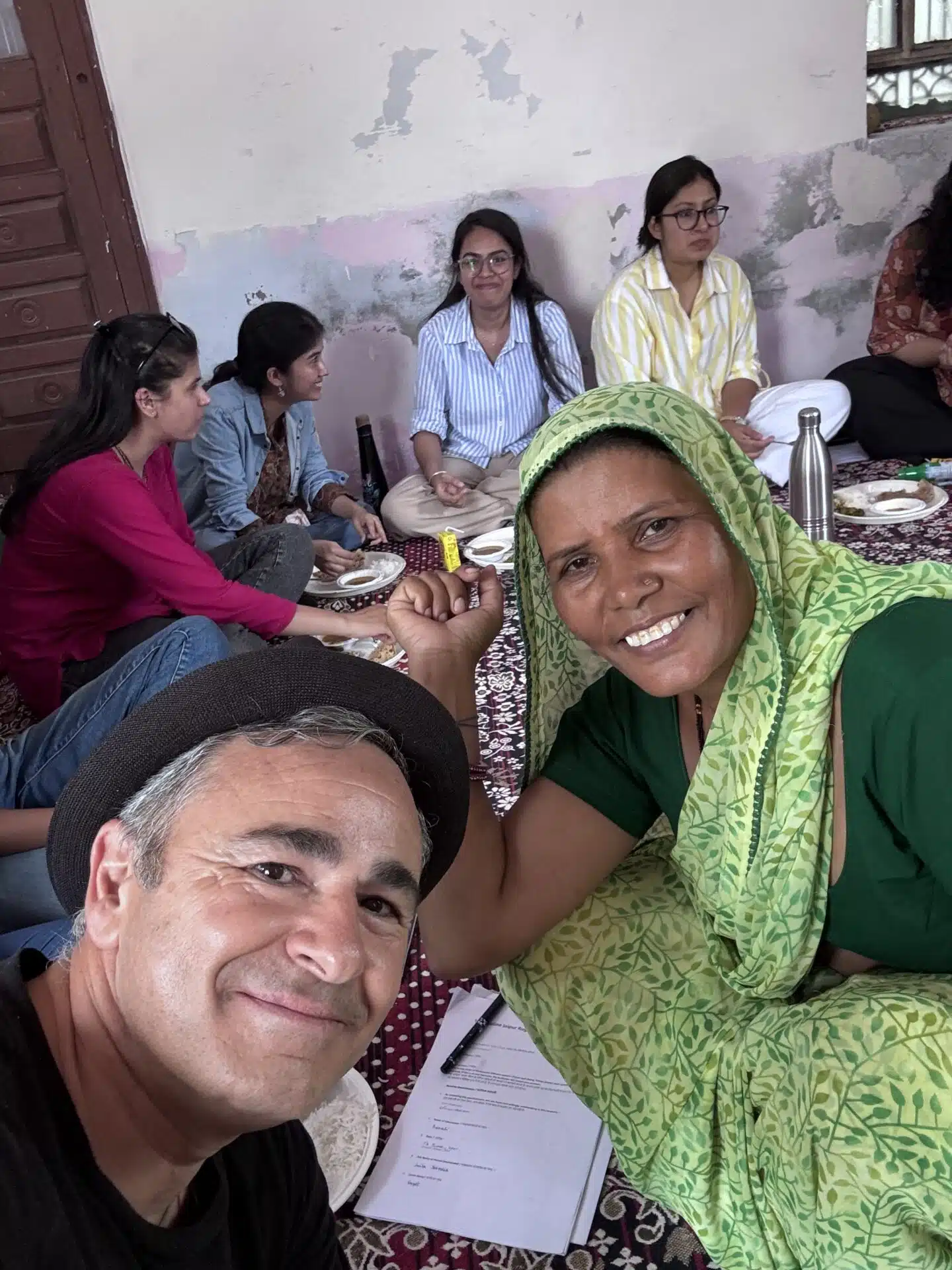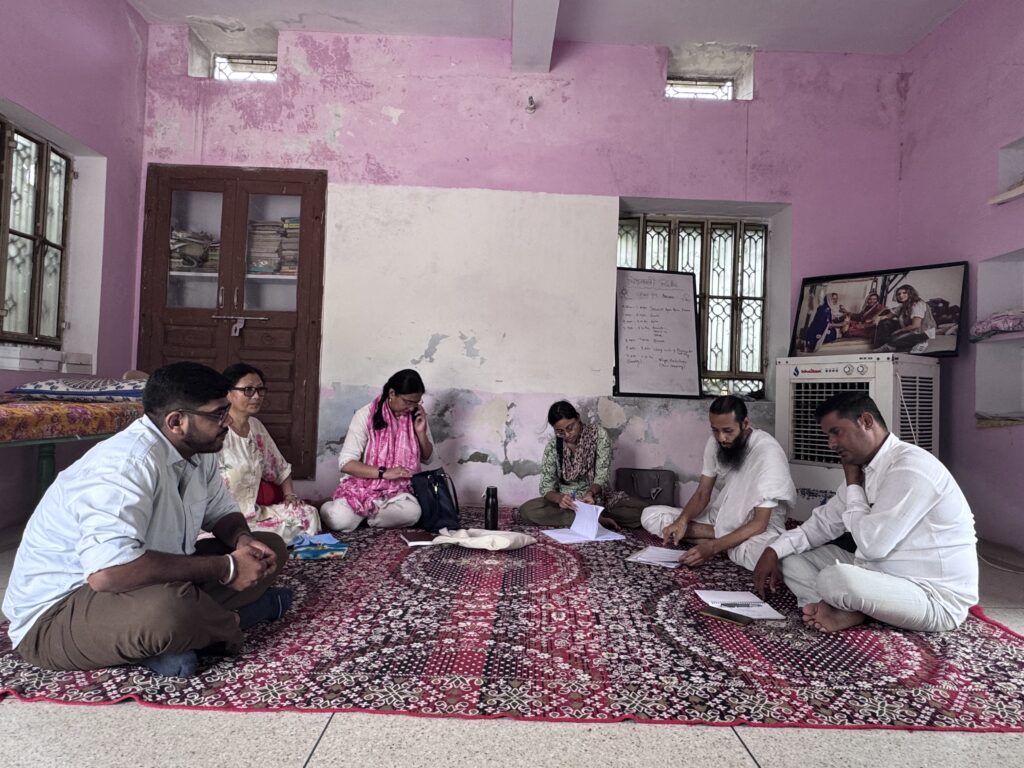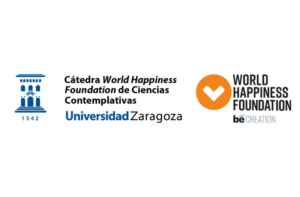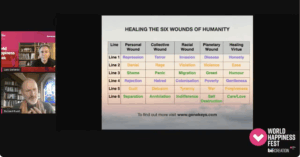
Happytalism and the 2025 Doha Political Declaration: A Paradigm Shift for Social Transformation
Executive Summary The Doha Political Declaration adopted at the 2025

Poverty eradication stands as one of humanity’s greatest moral imperatives. Yet to truly end poverty, we must reimagine our approach from the ground up. The World Happiness Foundation proposes a paradigm shift – moving beyond the traditional lens of scarcity and fear toward one of abundance, interdependence, and shared well-being. This perspective, rooted in our ethos of non-violence, fundamental peace, and rising consciousness, calls for collaborative action by all stakeholders. As we prepare to present our vision at the 2025 World Summit’s solution sessions, we invite global partners to join us in embracing Happytalism – a new paradigm for progress that sees happiness and freedom from want as the core of true development. In alignment with the United Nations and countless community leaders, we are working to realize “10 billion free, conscious and happy people by 2050,” a goal that demands unprecedented cooperation across sectors. This position paper outlines our vision: a future where poverty is eradicated not by zero-sum struggles, but by cultivating abundance, compassion, and holistic well-being for all.
For decades, anti-poverty efforts have been framed by a scarcity mindset – the notion that resources are finite and must be fought over. Traditional goals like “end poverty” and “zero hunger” focus on what is lacking in society, which, while important, can inadvertently reinforce competition and fear. By contrast, an abundance mindset flips the narrative: it replaces fear with trust and recognizes that one community’s flourishing need not come at the expense of another’s. In this view, when others succeed, we all succeed – prosperity and happiness are not zero-sum. An abundance approach encourages long-term, collaborative solutions over short-term fixes. It means investing in education, renewable energy, and public health not out of charity, but out of common sense: lifting up the most marginalized creates more for everyone, contributing to a stable and creative society. As World Happiness Foundation founder Luis Miguel Gallardo succinctly puts it, “A scarcity mindset creates limitations, whereas an abundance mindset allows us to think big and set bold goals.” The next frontier in global transformation is therefore a collective shift in consciousness – recognizing that we stand on a bountiful earth with potential allies all around, and that by awakening the best in ourselves, we can fundamentally change the game. Embracing abundance mindset in poverty eradication means focusing not only on what we want to eliminate, but on what we want to build: shared prosperity, trust, and joy in human thriving.
Happytalism is the World Happiness Foundation’s proposed paradigm to guide this shift from scarcity to abundance. At its heart, Happytalism reframes the very definition of progress: rather than measuring development purely by GDP or narrowly defined economic growth, it measures success by well-being, freedom, and happiness of people and planet. This philosophy is grounded in the belief that true prosperity is a holistic state – one where individuals and communities enjoy material security and psychological fulfillment in equal measure. Happytalism asks a simple but profound question of every policy and practice: Does this increase freedom, consciousness, and happiness for all? If not, it falls short as a solution.
Under Happytalism, the ultimate goal is Fundamental Peace, envisioned as a triad of freedom, consciousness, and happiness. In practical terms, this means a world where no one is trapped by poverty or fear, everyone has the liberty and awareness to pursue their purpose, and societal success is judged by the happiness and health of all members. Notably, this paradigm aligns with – but also expands beyond – the UN Sustainable Development Goals. For example, where the first SDG aims for “No Poverty,” we reimagine it as “Abundant Prosperity for All” – ensuring everyone thrives with access to ample resources and opportunities, through generosity, fair distribution, and economic systems focused on well-being rather than scarcity. This represents a move from ending deficits to creating positives. We believe policies should foster conditions where everyone can flourish, effectively preempting poverty by building systems of plenty. Another hallmark of Happytalism is promoting meaningful work and a well-being economy in place of endless extraction. Rather than viewing people as cogs in a growth machine, it emphasizes purpose-driven jobs, community entrepreneurship, and even new metrics like Gross Global Happiness to track progress. In essence, Happytalism is about designing an economy and society that put people’s happiness and consciousness at the center. By adopting this paradigm globally, humanity can redirect its vast innovations and resources toward uplifting the human condition, ensuring that no one is left behind in the pursuit of joy and freedom.
Our vision for poverty eradication is inextricably linked with the principles of non-violence and peace. We recognize poverty as not merely an economic issue, but as a form of “structural violence” – an injustice embedded in systems that leaves billions deprived of basic needs and dignity. As one World Happiness Foundation call to action notes, violence manifests not only in wars or physical harm, but whenever society’s structures cause harm or deny rights. When a child goes hungry in a world of plenty, or a group is marginalized due to race, gender, or belief, that is a form of violence by society’s structure. Eradicating poverty, then, is an act of peacemaking at the deepest level. It requires dismantling those systemic injustices and ensuring that compassion and fairness fill the void. In the spirit of Mahatma Gandhi’s teachings, “peace is not only the absence of violence, it is the presence of justice.” True Fundamental Peace goes beyond silencing the guns – it means actively cultivating justice, equity, and care in every community. The World Happiness Foundation defines Fundamental Peace as a state where people are free from fear and want, conscious of each other’s humanity, and able to live with joy. By this definition, there can be no true peace while poverty persists. Thus, our approach to ending poverty is inherently non-violent: we seek change not through coercion or competition, but through empathy, solidarity and restorative practices. We advocate for treating the poor with dignity, addressing grievances through dialogue, and healing social divides. A non-violent approach also means rejecting policies that treat poverty with punitive measures; instead we favor restorative justice and empowerment. In sum, peace and prosperity must grow together. A non-violent world is one where every person’s needs are met and rights upheld – a world where conflict diminishes because injustice has no fertile ground. By focusing on non-violence and Fundamental Peace, we lay the groundwork for a future in which poverty is abolished permanently, because our social fabric no longer tolerates exclusion or extreme inequality.
Central to the Happytalist approach is the elevation of human consciousness. We believe that to end poverty, external solutions (like jobs, infrastructure, aid) must go hand-in-hand with inner development. This means nurturing mindsets of resilience, empathy, and possibility within individuals and communities – especially among youth and educators who shape the future. The World Happiness Foundation has been investing in transformative educational initiatives to raise this collective consciousness. One flagship effort is the “Teachers of Happiness” program, which is training over 45,000 teachers across Latin America, Mexico, and Spain to become conscious catalysts of well-being in their schools and communities. Through partnerships like the Amauta Project and Bhutan’s “Educating for Global Happiness” curriculum, these teachers learn to integrate mindfulness, emotional intelligence, and compassion into education. The aim is to create “Schools of Happiness” where students not only gain knowledge, but also grow in character, purpose, and emotional health. By equipping educators with tools like the ROUSER leadership model (which emphasizes regenerative thinking, unity, systems thinking, empathy, and resilience), we are seeding a new generation that views the world through a lens of abundance and interdependence.
Such educational initiatives illustrate how rising consciousness can directly contribute to poverty eradication. When teachers foster self-worth, creativity, and collaboration in young minds, they break the cycle of scarcity mentality. Students who learn to trust their potential and empathize with others become adults who innovate community solutions and support the vulnerable, rather than seeing life as a ruthless competition. Education for happiness also promotes practical life skills – from emotional coping to social entrepreneurship – that empower communities to lift themselves up. We have seen, for instance, teachers in under-resourced Latin American schools adopting mindfulness practices to reduce stress and violence, leading to more harmonious, focused learning environments where children from poor neighborhoods can thrive. By spreading consciousness and values of non-violence and compassion through education, we prepare the soil for all other anti-poverty measures to take root. In the long run, a populace that is mindful and united will insist on policies that reflect those values – such as equitable distribution, inclusion, and sustainable development. Thus, raising consciousness is not a “soft” add-on to poverty programs, but a powerful strategy to ensure those programs are holistic and human-centered. It is how we cultivate future leaders and citizens who will maintain an abundant world without poverty.

Local artisans and partners gather in Jaipur, India to celebrate the “Threads of Happiness” initiative – a collaboration between the World Happiness Foundation and social enterprise Jaipur Rugs. Such multi-stakeholder partnerships weave economic empowerment together with holistic well-being, uplifting entire communities.
Eradicating poverty in a sustainable way requires an ecosystem strategy – a coordinated effort where governments, businesses, civil society, and communities all play a role. The World Happiness Foundation’s work exemplifies this multi-stakeholder approach, proving that collective action can unlock abundance where isolated efforts might fall short. One inspiring example comes from Jaipur, India, where we partnered with Jaipur Rugs, a social enterprise working with thousands of traditional weavers. Under the visionary leadership of founder N.K. Chaudhary, Jaipur Rugs has become more than a business; it is a community and ecosystem built around dignity and purpose for its artisans. Chaudhary believes that artisans – many from impoverished rural areas – deserve not just fair wages, but the chance to achieve self-realization and dignity through their work. This philosophy resonates strongly with Happytalism, which redefines success as the fulfillment of human potential through freedom, consciousness, and happiness.
Our joint initiative, aptly named “Threads of Happiness,” goes beyond boosting incomes for rug weavers. It creates an environment where artisans receive emotional and mental well-being support, leadership training, and spiritual enrichment alongside economic opportunity. In practice, this means organizing mindfulness workshops in the village courtyard (aangan), facilitating peer support circles, and providing educational scholarships for artisans’ children. The result is a holistic upliftment: artisans gain confidence, resilience, and a sense of community, which translates into improved livelihoods and grassroots innovation. As Luis Miguel Gallardo reflected during his journey with the Jaipur team, this project “is not just about improving the lives of artisans through economic support—it’s about fostering a deeper sense of self-awareness, empowerment, and connection to one’s purpose and well-being.” It teaches artisans to find joy and meaning in everyday moments, effectively weaving happiness into the fabric of their work. Such inner transformation for individuals becomes the bedrock of lasting systemic change: when people feel seen, capable, and hopeful, they become change-makers in their own families and neighborhoods. The ripple effect is profound – happier, healthier artisans raise thriving families, who in turn contribute positively to society. In Jaipur, what began as a corporate-foundation partnership has blossomed into a larger ecosystem involving local NGOs, academic researchers (who help measure impact and refine the model), and government supporters interested in replicating the approach.
This multi-stakeholder ecosystem model is replicable and scalable. We see parallels in our collaborations elsewhere – from working with teachers’ unions and education ministries in Latin America, to engaging healthcare providers to address mental health in impoverished communities, to partnering with cities that commit to well-being budgets. Each sector brings unique strengths: governments can enact supportive policies, businesses can drive social innovation and provide resources, civil society groups ensure community voice and trust, and global organizations (like the UN agencies we work alongside) can coordinate and amplify successes. The World Happiness Foundation, with its consultative status at the United Nations, actively encourages such partnerships for the SDGs. We know that no single entity can eradicate poverty alone, but together, in genuine partnership, we form an ecosystem capable of self-sustaining progress. In practical terms, an ecosystem approach to poverty means creating feedback loops of support – for example, connecting artisans and farmers to fair markets, linking schools with health services and entrepreneurial training, and leveraging technology to share knowledge among communities. It also means each stakeholder adopts the abundance mindset: rather than guarding their turf, they collaborate, trusting that empowering others ultimately benefits all. When a corporation invests in employee happiness or a city designs inclusive public spaces, they are contributing to an environment where fewer people fall into destitution. When a non-profit teaches digital skills to rural youth, businesses gain a more skilled workforce and governments see more stable economies. Every positive action reinforces another. In essence, poverty eradication becomes a shared mission and a shared reward.
In this pivotal moment of global convergence – as we approach the 2025 World Summit and unite around sustainable development – the World Happiness Foundation’s message is clear and hopeful: Poverty can be eradicated when we all choose abundance over scarcity, and compassion over indifference. Our Happytalist perspective urges the world to go beyond solving poverty as a problem and instead create prosperity as a human right, fueled by love, justice, and interdependence. This is a call for a new kind of progress: one measured not by how many billionaires are created, but by how many billion people are freed from fear and given the chance to flourish. It is a vision in which non-violence is woven into every policy – where we “do no harm” not only through peace treaties, but by ensuring no child goes to bed hungry and no community is left behind. It is a vision where fundamental peace – grounded in freedom, consciousness, and happiness – becomes the foundation on which all other successes rest. And it is a vision of rising consciousness, in which humanity awakens to the truth of our interconnectedness. In such a world, the idea of anyone living in extreme poverty would be as unacceptable as the idea of cutting down the last tree – because a higher consciousness recognizes it as a loss to all.
Realizing this future demands courage and collaboration. We must be willing to rethink entrenched economic models, champion innovative policies (like happiness-based budgeting and well-being indices), and invest in human development as fervently as we invest in technology. It also means each of us, as individuals and leaders, must cultivate an abundance mindset in our daily lives – celebrating others’ successes, sharing resources, and believing deeply that together, we can make the pie of prosperity bigger for everyone. The World Happiness Foundation commits to continue serving as a convener and catalyst in this movement. Through initiatives like #TenBillionHappy by 2050, we are working in partnership with the UN, governments, businesses, and grassroots heroes to create a planet free of the violence of poverty. We invite all stakeholders – educators, artisans, CEOs, activists, and policymakers alike – to join this journey of Happytalism in action. Let us become, in the words of our ethos, “Rousers” – conscious catalysts of well-being – who ignite change in every corner of the world.
Eradicating poverty is no longer a distant dream; it is an achievable reality once we embrace the mindset of abundance and the practice of happiness for all. In the story of human progress, let us turn the page from surviving to thriving. A world without poverty, built on non-violence, fundamental peace, and elevated consciousness, is within our grasp. United by a multi-stakeholder spirit and guided by a new paradigm of happiness, we can ensure that every individual has not just the material means to live, but the opportunity to live joyously and freely. This is the future we choose – a world of abundance, a world of Happytalism, a world where everyone can shine.
Sources:

Executive Summary The Doha Political Declaration adopted at the 2025

Introduction: Science and Spiritual Wisdom United for Peace Every year

Humanity carries deep core wounds that have shaped our personal